As posted on FosterEDU blog
A Case for Action
Through education, at-risk youth can be transformed into high school graduates armed with academic and professional capabilities and better social and civic skills. Education is the catalyst for bottom-up change and can become the epicenter in successful communities. The high school diploma serves as the most important impetus for driving personal and communal change. Educate our youth, and our communities will flourish. In fact, it can be argued that the successful graduation of even a single student de-risks a family unit and can amplify their impact by encouraging others to become contributing members of society. The power of example demonstrated by just a one individual graduating high school can begin to galvanize a single building or street. At scale, it can help build workforces with higher productivity, leading to lower poverty and reduced crime rates.
The challenge of our time is that while the U.S. Department of Education places total high school graduation rates at ~80 percent, an increase over years past, countless communities are still moving in a reverse trajectory. Michael Brown, CEO and co-founder of City Year, a nonprofit dedicated to helping at-risk students succeed, reports that one-third of students from low-income families don’t graduate high school. This foreshadows significant risk and dislocation for millions of young adults.
Where to Start?
Experts affirm that a local-level change agenda is about reestablishing the character of an area. Charles C. Haynes writes, “Schools are typically the conscience of a neighborhood.” It starts with a school’s system-wide educational reform initiative that includes creating more diverse academic alternatives for students, such as blended learning and flipped classrooms, particularly for the large number of students who fall outside traditional learning habits. Education ultimately improves and strengthens a community, including bolstering the economic infrastructure and wage increases. It empowers people to take better control of their own destinies. The byproduct is a greater social consciousness with positive consequences and a more prospering community.
What Drives (and Improves) Economic and Productivity Growth in a Community?
States that invest in education help build a strong foundation for economic success and prosperity, according to the 2013 Economic Analysis and Research Network report, “A Well-Educated Workforce is Key to State Prosperity.” Education is the foundation to providing people from disadvantaged backgrounds with decent health care and sufficient nutrition, the report found.
Educating the workforce also equates to greater productivity. Economic Policy Institute analysis found that between 1979 and 2007, states with greater productivity also had increased median worker compensation, thus supporting the strong link between productivity and education. In other words, providing access to high-quality education and creating an educated workforce that earns higher wages strengthens the economic infrastructure of a state—and the implications for local communities are no different.
High school diplomas are commonly the jumping-off point to such improvements, as is continuing education to cultivate a skilled and productive workforce. By abstaining from providing sufficient investments in education, including investments in nontraditional academic partnerships and high school diploma programs, local companies, businesses and talent markets all suffer and weaken over time. The report refers to this condition as a “virtuous cycle” that results in chronic challenges. The self-evident insight is that accessible educational opportunities produce a higher quality of life for these educated individuals. These highly skilled, well-educated, employed professionals support the local economy. Without education as a communal cornerstone, the economic stability of a community is at risk and usually the broader region deteriorates.
Education serves as a tool for boosting productivity and redistributing the increased income into returned higher wages for workers. To help provide greater productivity and positive economic returns for their communities, high schools, career and vocational schools, and traditional colleges should create educational alternatives and diverse learning possibilities to promote academic achievement.
What Drives (and Improves) Poverty and Income Inequality in a Community?
Income inequality and poverty-stricken households significantly influence the demise of a local community. And a low-income community driven by under-educated individuals actually perpetuates this fiscal depression. For example, a primary reason that the U.S. economy is growing but the traditional “all boats will rise” prosperity phenomena has not happened is a direct result of the millions of people outside the economic mainstream who lack the skills and opportunity to exploit this middle-skills gap moment. Regrettably, the consequences of poverty are impeding community growth, from poor health and hunger to lost productivity and steep economic deficits.
A cluster of factors shape the lives of young people suffering in poverty, including toxic living conditions, homelessness, violence, abuse, neglect, and illness. The distance between young people and education deepens as individuals continue to be encumbered by these pernicious barriers without any available solutions to better their lives.
Combating poverty with initiatives to lower high school dropout rates is also an essential ingredient, according to John Bridgeland in his article, “Fight Poverty: Lower High School Dropout Rates.” Without high school completion, young people experience higher unemployment rates and rates of receiving public assistance, going to prison, divorcing, and becoming single parents—all catalysts for a life and community plagued by poverty. Poverty is cyclical, yet academic options specifically designed to meet the unique needs of these low-income individuals can break the treacherous cycle.
For example, in Bridgeland’s co-authored report, “The Silent Epidemic: Perspectives of High School Dropouts,” nearly one-third of interviewed students said that they left high school to make money at a job and support their families. Family demands, along with lacking support, resources and options, inflate the number of dropouts who are more likely to work at low-income jobs and stay in an impoverished way of life.
Dropout prevention and high school completion programs designed to meet the specific needs and challenges of the non-traditional student (such as hybrid learning models) can help raise high school graduation rates and make both secondary education and career opportunities more viable.
What Drives (and Improves) Crime Rates in a Community?
 Youth entrenched in monetary struggles without a high school education are at high risk for being involved in crime, arrest, and incarceration. Crime rates are linked to educational attainment, according to a 2013 report by the Alliance for Excellent Education. The report, entitled “Saving Futures, Saving Dollars: The Impact of Education on Crime Reduction and Earnings,” asserts that if male high school graduation rates increased by just 5 percent, the nation could save about $18.5 billion in annual crime expenses. The lower the education attainment levels, the higher the rates of arrest and incarceration.
Youth entrenched in monetary struggles without a high school education are at high risk for being involved in crime, arrest, and incarceration. Crime rates are linked to educational attainment, according to a 2013 report by the Alliance for Excellent Education. The report, entitled “Saving Futures, Saving Dollars: The Impact of Education on Crime Reduction and Earnings,” asserts that if male high school graduation rates increased by just 5 percent, the nation could save about $18.5 billion in annual crime expenses. The lower the education attainment levels, the higher the rates of arrest and incarceration.
Reforming school climates and increasing student engagement can help move vulnerable young people away from crime and prison and toward college and a career path, says President of the Alliance for Excellent Education, Bob Wise. “The school-to-prison pipeline starts and ends with schools,” Wise said.
Not only will elevating high school graduation rates for male students cut state crime costs, but educating male youth will reduce total criminal activity nationwide, the report predicts, including fewer incidences of:
– Assault by an average of 60,000 annually
– Larceny by more than 37,000
– Motor vehicle theft by more than 31,000
– Burglaries by more than 17,000
– Murders (average 1,300), rape occurrences (more than 3,800) and robberies (more than 1,500)
The following statistics also support the compelling connections among education, crime rates, and the economy:
– It costs $12,643 to educate one student in one year; it costs $28,232 to house one inmate
– 56% of federal inmates, 67% of state inmates and 69% of local inmates didn’t finish high school
– The U.S. economy is projected to have additional annual earnings of about $1.2 billion with increased graduation rates
The Time Is Now
Poverty, income inequality, and crime are combustible forces that can destroy families, corrupt communities and harden society in countless ways.The good news is that the common vaccine to all these ailments is education, starting with a high school diploma. More than 90% of jobs demand this credential to get a job, and the imperative for all stakeholders (students, parents, schools, businesses and government) is to build a cohesive plan of attack.
The high school diploma serves as the cornerstone to future citizens and our communities. If academic communities can collectively address educational crises by implementing both traditional and nonconventional student solutions, we can foster higher economic returns, poverty mitigation, crime-free environments, and enhanced civility.
